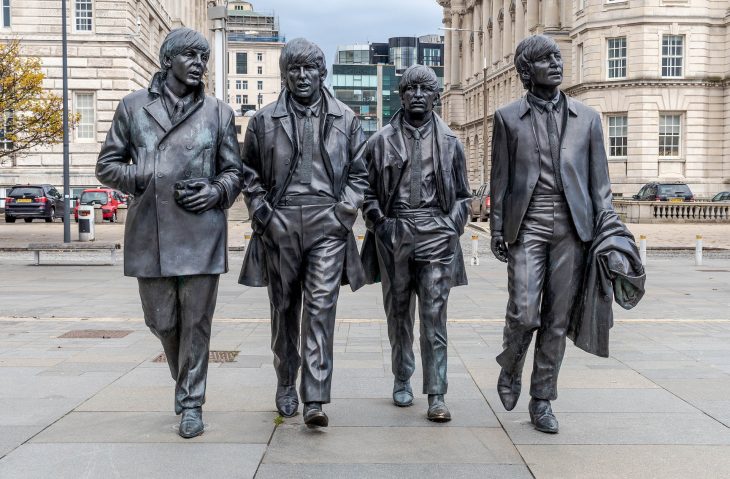
The Beatles is perhaps one of the most recognizable bands in the world. Although they rose to fame in the 1960s, their music still holds a profound impact on contemporary music and culture. With timeless best-selling hits such as Here Comes The Sun, Yesterday, Let It Be, and Hey Jude, this English rock band is highly regarded as the most influential band and people of all time. Rock your newly-found knowledge as you read these fascinating facts about The Beatles.
- The band formed in 1960 in Liverpool, England.
- They have 13 albums and one compilation album.
- Rolling Stone hailed the band as the best artists of all time in 2004.
- They released 12 albums, 13 extended plays, and 22 singles.
- With sales of more than 600 million records, they are the best-selling music artist of all time.
- The Beatles’ principal members are John Lennon, Paul McCartney, George Harrison, and Ringo Starr.
- They worked under three records: Parlophone, Apple, and Capitol Records.
- The band acquired the nickname “the Fab Four” sometime during their career. This nickname inspired a California-based tribute band of the same name.
- John Lennon and Paul McCartney served as the primary songwriters in the band.
- Their music mainly drew influences from beat, skiffle, and 1950s rock and roll.
- They also experimented with various genres of music, including Indian music, hard rock, and psychedelic music.
- Stuart Sutcliffe played as their original bass guitarist, until he left to continue his studies in 1961.
- Ivor Arbiter designed the band’s logo.
- Their debut album was Please Please Me, which they released in 1963.
- The last album they released was Let It Be in 1970.
- The Beatles only stayed active for 10 years, from 1960 to 1970. However, they officially produced music for only seven years.
- Their debut album, Please Please Me, spent 30 consecutive weeks at number one in the charts.
- The album that replaced Please Please Me at number one was The Beatles, which spent 21 weeks at the top of the charts.
- In the US, the band had 21 No. 1 hits on the Billboard music charts.
- The group inspired such fanaticism towards them that it had its own term: Beatlemania.
Some fans speculated that Paul McCartney died in 1966 and had been replaced by a look-alike.
If you’re a fan of The Beatles, you probably have heard the infamous conspiracy theory saying “Paul is dead.” The urban legend claims that McCartney died in a car crash on November 9th, 1966, leading The Beatles to replace him with a look-alike to spare the public from grief. Proponents of this myth reportedly found “clues” embedded within the lyrics, which inspired their fans’ penchant for analyzing their songs.
A popular “clue” to McCartney’s supposed death could allegedly be found in the final section of Strawberry Fields Forever. John Lennon supposedly muttered “I buried Paul,” when in reality, he actually said “cranberry sauce.” The band became aware of this rumor and even went to confuse the listeners on purpose with lyrics such as “the Walrus was Paul” in I Am the Walrus.
Another subject of scrutiny was Abbey Road’s iconic cover. The cover features the four members walking on a zebra crossing, with McCartney the only one who was barefoot. He also was walking out of step with the other members, further fueling the rumors.
In reality, Paul McCartney just remained secluded in Scotland with his family, taking a break from the press. That said, Time magazine included the rumor as one of “the world’s most enduring conspiracy theories” in 2009.
Buddy Holly and the Crickets inspired the band name of The Beatles.
Despite being the biggest name in music, The Beatles weren’t always known as such. In 1957, John Lennon formed a skiffle band in Liverpool that briefly called themselves the Blackjacks. Since another local band had the same band name, they changed it to The Quarrymen.
In 1960, their then-bassist Stuart Sutcliffe suggested the name “Beatals”, after Buddy Holly and the Crickets. They later changed it to the Silver Beetles, then the Silver Beatles, before they settled on The Beatles.
They started out playing in bars and clubs.
Early on in their career, The Beatles were a small-time band mostly playing in bars and clubs. Club owner Bruno Koschmider employed them for a 3½-month contract at his club, the Indra Club in Hamburg, Germany. However, he eventually terminated their contract after learning that they had been performing for a rival club.
The Beatles also played frequently at The Cavern Club in Liverpool, England, where they first met Brian Epstein. Upon seeing their performance, Epstein immediately saw the great opportunities that awaited the band. Eventually, they hired Brian Epstein as their manager in 1962.
Decca Records rejected The Beatles.
The success of The Beatles wasn’t instantaneous, because they had their fair share of rejections during their career. Most infamously, in January of 1962, The Beatles auditioned for the British record label Decca Records. However, the label rejected the band because one of the executives thought that “groups of guitars are on the way out.” Instead of The Beatles, Decca Records chose the local group Brian Poole and the Tremeloes. The Beatles released some recordings from this audition in their compilation album Anthology 1.
They had their first official recording session at Abbey Road on June 6, 1962.
On June 6th, 1962, the Beatles had their first official recording session at the historic Abbey Road Studios. This session also served as their audition for EMI Studios’ Parlophone label. During this recording, the members of the band were John Lennon, Paul McCartney, George Harrison, and Pete Best. Together, they recorded four songs: Bésame Mucho, Love Me Do, P.S. I Love You, and Ask Me Why. Assistant producer Ron Richards and balance engineer Norman Smith headed the recording, and producer George Martin listened to the recordings later on in the session. After giving them a lengthy lecture on their sound and recording equipment, Martin asked if there was anything the band didn’t like. George Harrison then responded that he didn’t like Martin’s tie. This opened up some humorous exchanges that would eventually contribute to Martin’s decision to sign them up for the label.
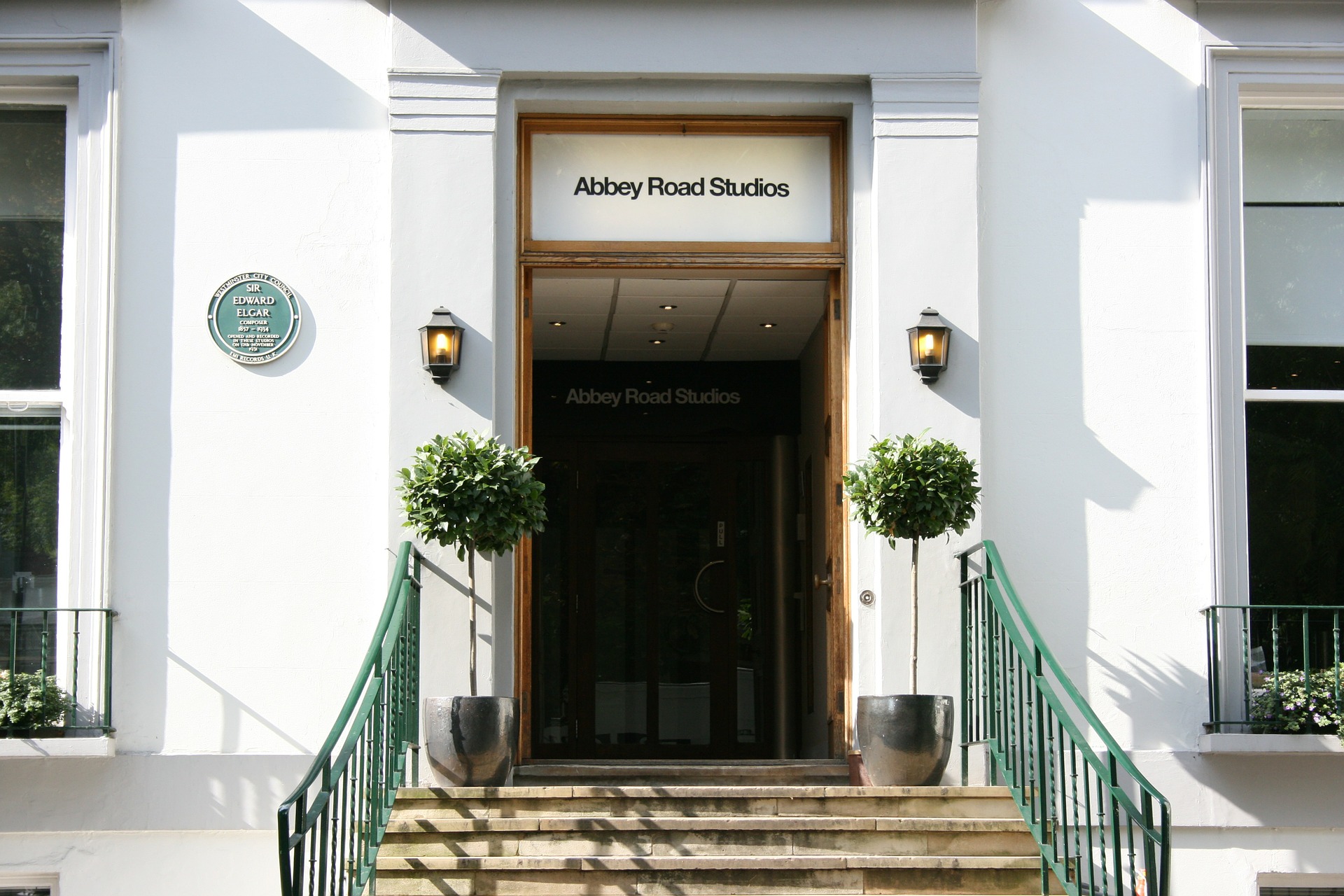
They recorded Let It Be before Abbey Road.
While Let It Be was the final album released under The Beatles, they actually recorded the tracks before they recorded the songs in their album Abbey Road. The band released Abbey Road in 1969 and Let It Be in 1970. They had their last studio recording session as a group on August 20th, 1969. Interestingly, the last song they ever recorded together was The End.
John Lennon and Paul McCartney shared equal credits for their songs because of their partnership.
Most of The Beatles’ songs pay credit to Lennon–McCartney because of the songwriting partnership between John Lennon and Paul McCartney. The two songwriters share equal credits for the tracks, even if only one of them wrote the songs. Early on in their career, they would work together extensively, and Lennon even stated that they would work “eyeball to eyeball” to compose the music and lyrics. Later on, however, the pair worked mostly separately with little input from the other person.
According to Lennon, they first had an informal agreement on the partnership when they were around 15 or 16 years old. The earliest song officially credited to Lennon–McCartney was You’ll Be Mine, released in 1960.
The Beatles recorded most of their album Please Please Me in under 13 hours.
One of the most interesting The Beatles facts is that they recorded most of their debut album in less than 13 hours. The band started recording the album at 10 AM and finished at 10:45 PM on February 11th, 1963. More interestingly, John Lennon was nursing a cold on that day, but they still managed to wrap up recording with the hit song Twist and Shout.
John Lennon initially thought George Harrison was too young to join the band.
In February 1958, back when they were the Quarrymen, Paul McCartney invited his friend George Harrison to watch them perform. Harrison immediately wanted to join the band, but had just turned 15 then, which the 17-year-old John Lennon deemed too young. However, Harrison persisted and played the lead guitar part of the instrumental song Raunchy on the top deck of a Liverpool bus. Impressed by his performance, the band eventually took him in as a lead guitarist.
Ringo Starr was the last member to join The Beatles.
In 1962, after the band’s first recording session at EMI Studios, George Martin stated that he was unimpressed with the performance of former Beatles drummer Pete Best. This led to the band dismissing Best and replacing him with another drummer, Ringo Starr. To join The Beatles, Starr left the band Rory Storm and the Hurricanes, becoming the last member to officially join the band.
Astrid Kirchherr took the band’s first semi-professional photos.
Originally, The Beatles was a five-piece band with a line-up consisting of John Lennon, Paul McCartney, George Harrison, Stuart Sutcliffe, and Pete Best. Astrid Kirchherr was the first person to take semi-professional photographs of the original members early on in their career in Hamburg. Kirchherr was also Stuart Sutcliffe’s fiancée, who cut his hair in the “exi” style that the other members would eventually adopt.
None of the members were even 30 years old when The Beatles broke up.
The iconic band broke up due to a lot of different factors, including “personal differences [and] business differences,” according to Paul McCartney. By 1969, things were getting quite rocky for the Fab Four. In September of that year, John Lennon privately announced to the other members that he’ll be leaving the band, although he was unclear whether it was temporary or permanent.
Similarly, McCartney publicly announced that he will no longer be working with the band by April of 1970. By that time, none of them were even 30 years old. The oldest of the bunch, Ringo Starr, had only been 29 at that time.
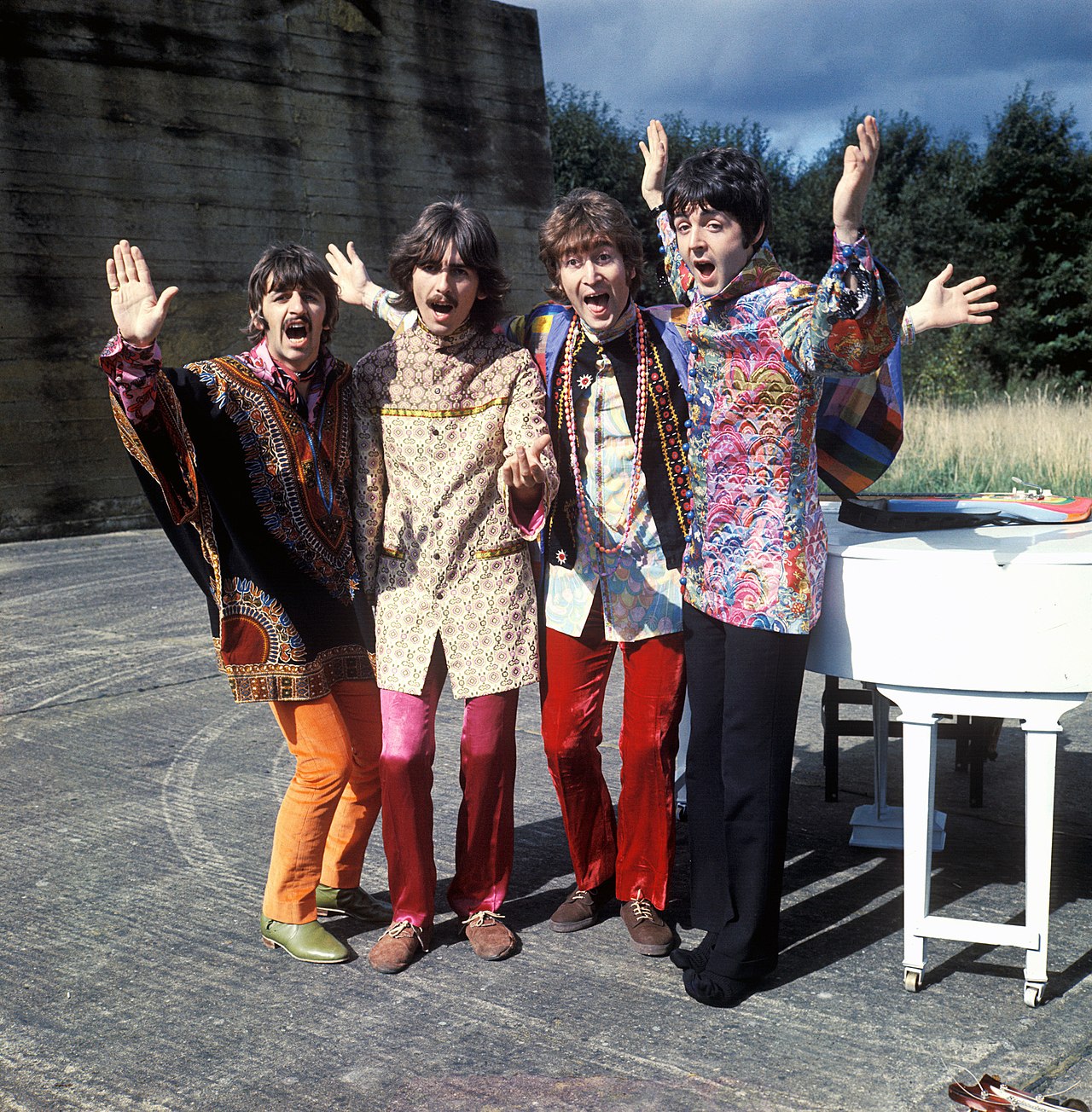
None of them could read sheet music.
With their award-winning and chart-topping music, it’s no surprise that each of the Fab Four has a natural musical prowess. One of the most surprising facts about The Beatles, however, is that none of them could read sheet music. Paul McCartney himself disclosed that none of his band members could read or write music and that he doesn’t understand music theory.
The capitalization of the “The” in their band name is up for a lot of debate.
When it comes to writing the “The” in “The Beatles,” a lot of people debate on whether or not the T should be capitalized. On one hand, John Lennon himself used the lowercase t to describe the Beatles, reflecting a stylistic expression of the band name. Meanwhile, those who advocate for the capital T state that the capital would be more grammatically correct because of the rules regarding proper nouns.
The Beatles’ Yesterday inspired the most cover versions of any song.
It’s no secret that Paul McCartney’s song Yesterday is one of the band’s most popular songs even to this day, and you might have heard a couple of different versions of this particular song. In fact, Yesterday inspired more than 2,200 cover versions, more than any other song in their discography.
The Beatles heavily influenced the counterculture of the 1960s.
During the 1960s, the cultural phenomenon of the counterculture spread widely throughout the West. The counterculture entailed widespread talks of sexuality, civil rights, women’s rights, anti-establishment beliefs, and the use of recreational drugs.
With hippies and other alternative lifestyles emerging in the rise of this cultural phenomenon, The Beatles played a key figure to these trends. They fully embraced the creative, carefree culture that inspired various movements such as women’s rights, gay liberation, and environmentalism.
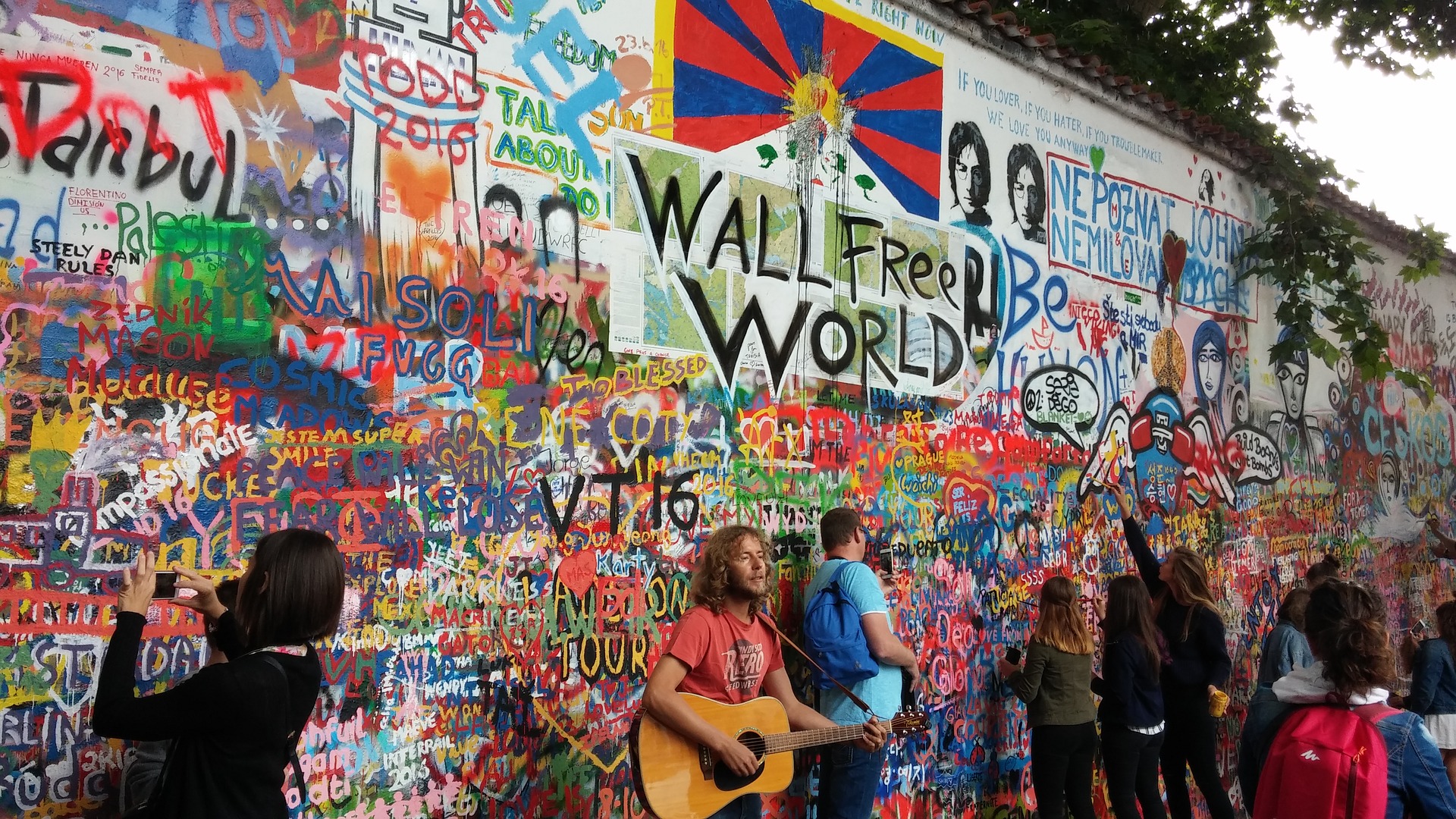
John Lennon grew up near an actual place named Strawberry Field.
In writing the song Strawberry Fields Forever, John Lennon recalls playing in the garden of a Salvation Army children’s home near his childhood home in Liverpool. The property’s name was Strawberry Field, which later became a pilgrimage site for the band’s fans following the fame of the song it inspired.
Their arms on the cover of Help! does not actually spell “help” in semaphore.
Originally, cover photographer Robert Freeman wanted the cover of Help! to feature The Beatles spelling out HELP in flag semaphore. Upon taking the photographs, however, Freeman stated that the arrangement wasn’t visually pleasing enough, so they rearranged the arms to capture a more visually-appealing photograph. They ended up spelling a gibberish word, NUJV — but at least the cover looked iconic!
George Harrison was sometimes described as “the quiet Beatle”.
Whenever he performed on stage, George Harrison often looked focused and serious. Moreover, he was less outspoken in the media than the other members of the band, leading many to describe him as “the quiet Beatle”.
However, his reputation as “the quiet Beatle” started when they arrived in the US in 1964. Harrison was nursing a case of strep throat and a fever, and his doctor advised him to limit speaking before their scheduled appearance on The Ed Sullivan Show. The media took notice of this and gave him that nickname, much to his amusement.
George Harrison embraced Indian culture and incorporated Indian music in their songs.
When they were filming a scene in an Indian restaurant in London for their movie “Help!” in 1965, George Harrison took notice of the musicians playing Indian instruments. Most notably, he started to take interest in the sitar and Indian classical music.
He eventually learned sitar from sitar maestro Ravi Shankar and incorporated various aspects of Indian music in The Beatles’ songs. Harrison introduced his sitar-playing in their song Norwegian Wood, opening up a “Great Sitar Explosion,” as described by Shankar.
They once wanted to buy a group of private islands in Greece in the hopes of living there together.
In the summer of 1967, the band wanted to buy a set of islands in Greece. They were hoping to live and work there together with their friends and family. The group even went as far as applying to the Greek government for permission, but they ultimately didn’t go through with the purchase of the islands.
A number of people got the unofficial nickname of “the fifth Beatle”.
The “fifth Beatle” is an unofficial title that’s been associated with a number of different people. This includes former bassist Stuart Sutcliffe, former drummer Pete Best, and occasional keyboardist Billy Preston. Some people even regard manager Brian Epstein as the fifth Beatle because of his contributions to the band’s public image and business matters.
Paul McCartney stated on two occasions that Brian Epstein and George Martin deserved the title. George Harrison, however, recognized two “fifth Beatles”: public relations manager Derek Taylor and road manager-turned-business-executive Neil Aspinall.
The Beatles’ first film A Hard Day’s Night was highly successful.
Following their early success in the music industry, they made their film debut in the 1964 film A Hard Day’s Night. This musical comedy film reached resounding critical and financial success, with Time magazine listing it as one of the all-time great films even 40 years after its original release. The film also received two nominations for the Academy Awards, including Best Original Screenplay.
The band garnered controversy when John Lennon said they were “more popular than Jesus.”
In an interview in March 1966, John Lennon stated in an interview that the Beatlemania was so intense that The Beatles were “more popular than Jesus” at the time. He argued that the youth were more interested in them than the Christian faith.
The sentiment led to some radio bans, boycotts, and even threats to the band’s safety. One radio station even organized a bonfire to burn The Beatles records to show public contempt. Many believe that he was just criticizing fanaticism for them rather than expressing arrogance, but the sentiment nevertheless garnered a huge amount of controversy from Christian groups worldwide. In his apology, Lennon stated that he was just making a commentary on the decline of Christianity in the UK. He also stated that he was neither anti-God nor anti-religion.
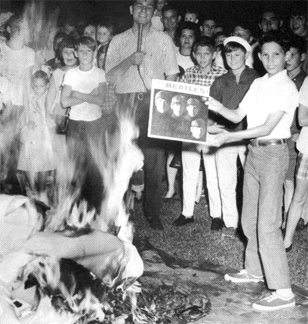
The Vatican forgave John Lennon for his “more popular than Jesus” remark.
When John Lennon apologized for his infamous comment, the Vatican’s official newspaper, L’Osservatore Romano, stated that the apology was sufficient. The article also gave praise to the band’s contributions to music and their capacity to induce certain emotions through their melodies.
They stopped doing live performances because of their fans.
The Beatles had a notable charisma while performing on stage, but they eventually stopped playing their songs live later in their career. They stopped doing live performances because of a number of reasons, such as exhaustion, poor sound quality, and threats to the band’s security. As the Beatlemania grew bigger, the screams of their fans would drown out most of the sounds they made on stage making it impossible to hear them perform.
When the band stopped doing live performances, they began experimenting more frequently with music that would be hard to pull off live, such as the songs in Sgt. Pepper’s Lonely Hearts Club Band.
Paul McCartney and Pete Best were arrested and deported from Germany for suspected arson.
In their early days, the members of the band were merely teenagers having fun and playing music together — and teenagers can be quite reckless. While they were staying in Germany in 1960, Paul McCartney and Pete Best used fire to see their belongings while inside a cinema. Some accounts state that they burned an unused condom attached to a nail. They left the building undamaged, apart from a burn mark in the wall. Bruno Koschmider told the police that they tried to set fire to the cinema, and they spent the night in jail before their deportation the following day.
John Lennon changed his middle name to Ono after marrying Yoko Ono.
It was unquestionable that John Lennon was madly in love with his wife, Japanese artist Yoko Ono. Lennon would often insist that Yoko Ono would come to the recording studio with him, much to the disapproval of his bandmates.
John Lennon even changed his middle name to Ono after his wife. He stated that he greatly disliked his original middle name, Winston, because it reflected wartime patriotism and wanted to remove it from his name. However, the UK law dictates that he cannot fully revoke his given name, so his name instead became John Winston Ono Lennon.
Many believed that their song Lucy in the Sky with Diamonds was about LSD.
Because of the initials of Lucy in the Sky with Diamonds, there were speculations that it was a reference to LSD, a hallucinogenic drug. John Lennon, who primarily wrote the song, made it clear that this was merely a coincidence. The primary inspiration for the song was a nursery school drawing of his son, Julian, who was 3 years old then. Calling his drawing Lucy – in the Sky with Diamonds, the art depicted his classmate, Lucy O’Donnell.
John Lennon was murdered in 1980.
On December 8, 1980, Mark David Chapman shot John Lennon outside his apartment in Manhattan, New York City. Chapman used to be a fan of The Beatles, but he harbored increasing contempt and an obsession with Lennon because of his lifestyle, lyricism in certain songs such as God and Imagine, and the “more popular than Jesus” statement. He shot at Lennon five times, hitting him four times in the back. Oddly enough, he remained at the scene and read The Catcher in the Rye by J.D. Salinger until the police came and arrested him.
Chapman’s lawyers reported that he was in a delusional psychotic state at the time of the offense, and he pleaded guilty because that was the “will of God.” The judge sentenced him to 20 years to life with the condition that he would receive proper mental health treatment.
George Martin played the keyboard on almost all of The Beatles’ early albums.
With his years of musical experience, George Martin helped the Fab Four refine their talents. He frequently played the keyboards in the early records of the band. Martin was also one of the inspirations for the incorporation of classical music into the band’s more modern sound, pushing the idea to put a string quartet to accompany the band in Yesterday.
Only John Lennon and Paul McCartney recorded the song The Ballad of John and Yoko.
During the recording of The Ballad of John and Yoko, only John Lennon and Paul McCartney could come to the studio. At that time, George Harrison was abroad while Ringo Starr was off filming The Magic Christian. Lennon and McCartney didn’t wait for the other two because Lennon insisted that the song should be recorded immediately. The pair recorded all of the instruments in the song and even role-played as their bandmates talking in the record.
They unintentionally snubbed the Philippines’ First Lady Imelda Marcos, leading to a backlash.
The Beatles received national backlash in the Philippines following their mishap with Imelda Marcos, the wife of the then-incumbent Philippine president and dictator Ferdinand Marcos. On July 4, 1966, the First Lady hosted a party in the band’s honor, but Brian Epstein had already declined the invitation before they went to the Philippines.
The band remained unaware of the reception until the presidential guards woke them up. The guards insisted that they were supposed to be at the palace. Upon the band’s refusal to join the reception, the First Lady took great offense and stated that they let her down. Supporters of the government turned against the band, and the Fab Four received a huge amount of death threats, intimidation, and even harassment right up to the moment they left the country.
Yesterday’s working title was “Scrambled Eggs”.
Paul McCartney stated that the melody for Yesterday came to him in a dream and that he rushed to the piano when he woke up to avoid forgetting it. Not having any words in mind yet, he worked with the title Scrambled Eggs.
McCartney stated that the working first verse was “Scrambled eggs / Oh my baby how I love your legs / Not as much as I love scrambled eggs.” He worked with these lyrics to remember the melody and phrasing of the song. Who knew that scrambled eggs would give rise to one of The Beatles’ most popular songs?
The BBC banned a number of songs from The Beatles.
Because of some lyrical issues such as sexual or drug-related undertones, product mentions, and vulgar language, the British Broadcasting Corporation (BBC) banned the airing of some songs of the Fab Four. These banned Beatles songs include I Am the Walrus, Come Together, Lucy in the Sky with Diamonds, and A Day in the Life.
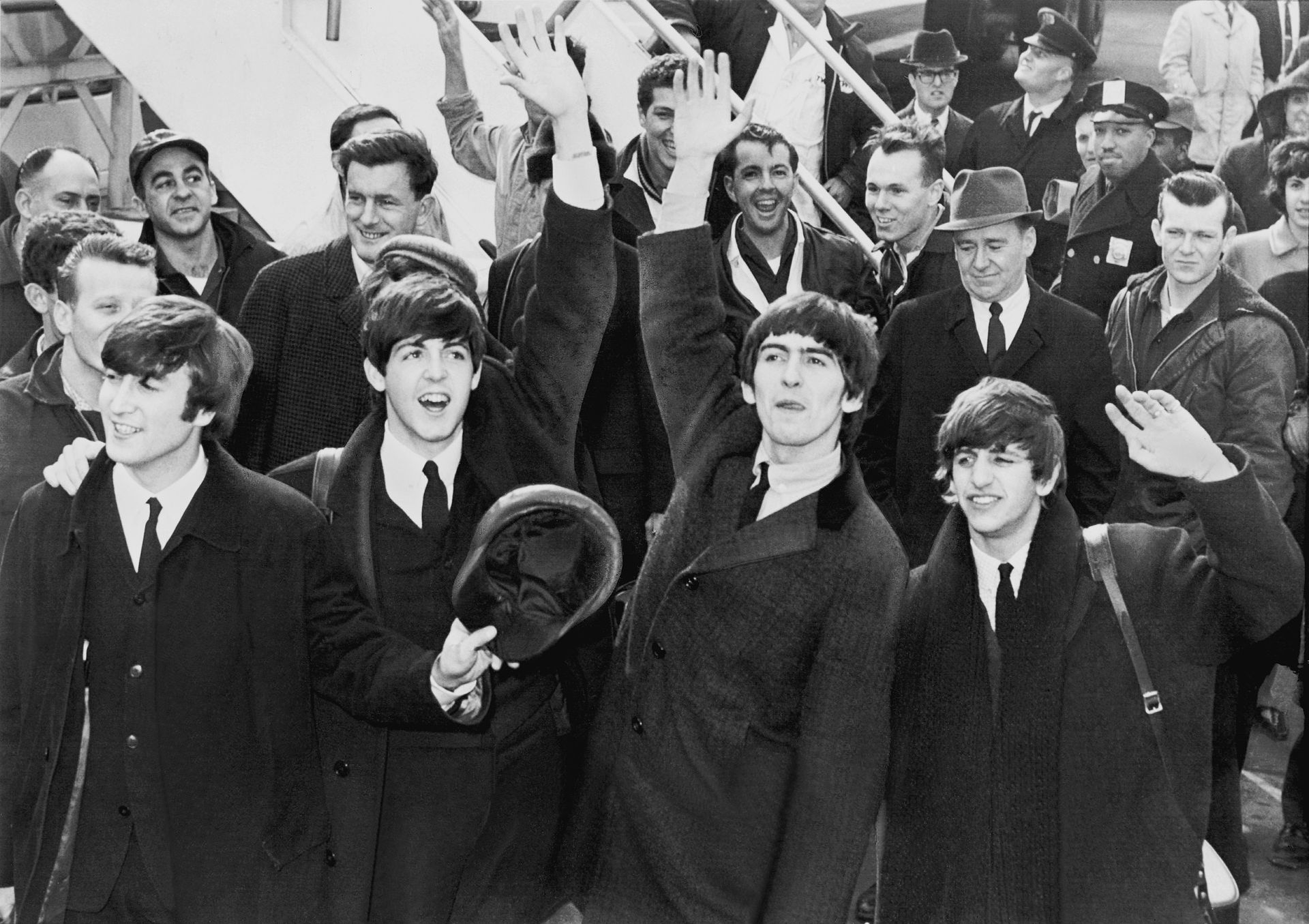
Octopus’s Garden has some real-life inspiration.
In writing Octopus’s Garden, Ringo Starr took inspiration from a boating trip with his family in 1968. The captain of the boat told him that octopuses are fond of collecting stones and shiny objects, with which they build underwater gardens.
This idea fascinated Starr, which eventually made way for the second song that The Beatles’ drummer has ever written for the band. More interestingly, Octopus’s Garden was also their last song to feature Starr on lead vocals. How’s that for curious Beatles facts?
Bob Dylan got The Beatles’ members hooked on marijuana.
On August 28th, 1964, Bob Dylan first got the Fab Four hooked on cannabis or marijuana. Dylan met the band at the Delmonico Hotel in Manhattan, and encouraged them to try and smoke the psychoactive drug. Bob Dylan reportedly rolled a cannabis cigarette and passed it onto John Lennon, who then passed it to Ringo Starr.
Starr, not knowing that he should pass the cigarette, had smoked the whole thing. Dylan’s road manager then proceeded to roll multiple cigarettes, and everyone in the room started smoking their own. After that fateful meeting, drugs became a regular part of The Beatles’ lifestyles.
Ringo Starr was the first Beatle to have a great-grandchild.
Among the Fab Four, Ringo Starr (real name Richard Starkey) is the oldest by birth date. Unsurprisingly, he also is the first of them to be a great-grandfather. His granddaughter, Tatia Starkey, gave birth to a child in 2016.
The pine tree planted in memory of George Harrison died because of a beetle infestation.
George Harrison lived a rather spiritual life. He also was an avid gardener before he died in 2001 due to metastatic lung cancer. In 2004, three years after Harrison’s death, a pine tree had been planted in a Los Angeles park in his honor. It grew to more than 10 ft (3 m) tall, but its life came to an end in 2014 due to an insect infestation — beetles, to be exact.
Vandals repeatedly steal the street sign of Penny Lane.
Because of the popularity of the song Penny Lane, vandals regularly steal the street sign of the actual Penny Lane. This street sign theft problem was so persistent that the buildings in the area now just have paintings of the street sign on their walls. The area also became a tourist attraction for fans of the band. Similarly, street sign theft also became common in Blue Jay Way in Los Angeles, California because of The Beatles’ song of the same name.
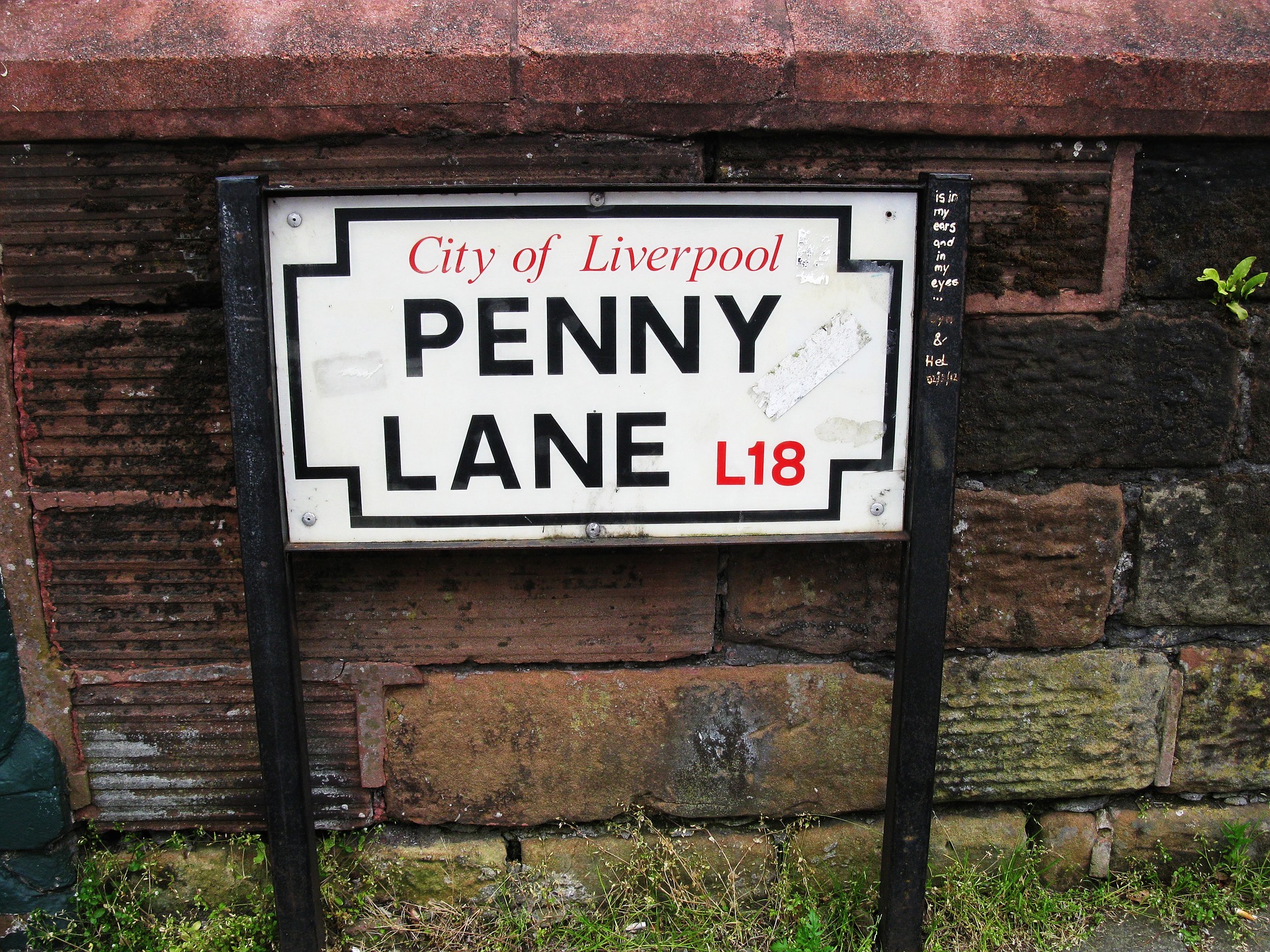
Michelle was a song inspired by Paul McCartney’s preferred pickup method.
Paul McCartney took inspiration from his Liverpool days when he wrote Michelle. He stated that in one of the art student parties he attended with Lennon, he saw a student sporting a goatee and a striped T-shirt singing in French. He then began to sport a black turtleneck and a guitar, singing made-up French words in the corner of parties in the hopes of catching the interest of the ladies.
While it was unsuccessful at impressing girls, Lennon convinced him to make it into a song. He consulted the help of French teacher Jan Vaughan, who eventually came up with the line “Michelle, ma belle.”
Production executives wanted American actors to dub over A Hard Day’s Night for its US release.
Following the success of The Beatles’ film A Hard Day’s Night, the movie was bound to hit the big screen in the United States. However, before its release, an executive of United Artists wanted American actors to dub over the voices in the film. This due to the concern that Americans wouldn’t be able to understand the Liverpudlian accents of the Fab Four. McCartney, however, angrily declined this suggestion.
I Want To Hold Your Hand was the band’s first No. 1 hit in the US.
It wasn’t an easy feat for the Liverpudlian lads to break into the American market, so Brian Epstein reportedly asked the group to tailor a song that can appeal to the US. Lennon and McCartney complied with the request and composed I Want to Hold Your Hand, which the group recorded and released in 1963.
Sure enough, it was their first single that hit number one in the US. It topped the Billboard Hot 100 charts a few months after its release. The iconic song paved the way for the British Invasion in the American music scene, wherein British music and culture gained significant popularity in the US.
Hey Jude was originally Hey Jules, and Paul McCartney wrote it for John Lennon’s son, Julian.
Following John Lennon’s affair with Yoko Ono and his increasing use of LSD, he split with his then-wife Cynthia Powell Lennon. Paul McCartney was concerned about the effects of the separation on Lennon’s five-year-old son, Julian.
A month after the separation, he came to visit Julian and composed Hey Jude in the car on the way there. The song’s original title was Hey Jules, which McCartney wrote to comfort Julian. He later changed it to Hey Jude, simply because it sounded better.
You can faintly hear Paul McCartney’s profanity in Hey Jude.
Around the 2:58 mark of the song Hey Jude, McCartney made a mistake on the piano, which caused him to swear out of frustration. Exclaiming “f***ing hell,” over the otherwise solemn track, the group thought it was so funny that they left it on the record.
Central Park has a 2.5-acre memorial for John Lennon, and its name is Strawberry Fields.
Near the site of John Lennon’s murder, a 2.5-acre (1.0 ha) land serves as a memorial for Lennon in New York City’s Central Park. Named Strawberry Fields, after the Beatles song, it stands on Central Park West at West 72nd Street. The landscaped memorial features a stone mosaic with the word Imagine, after Lennon’s song.
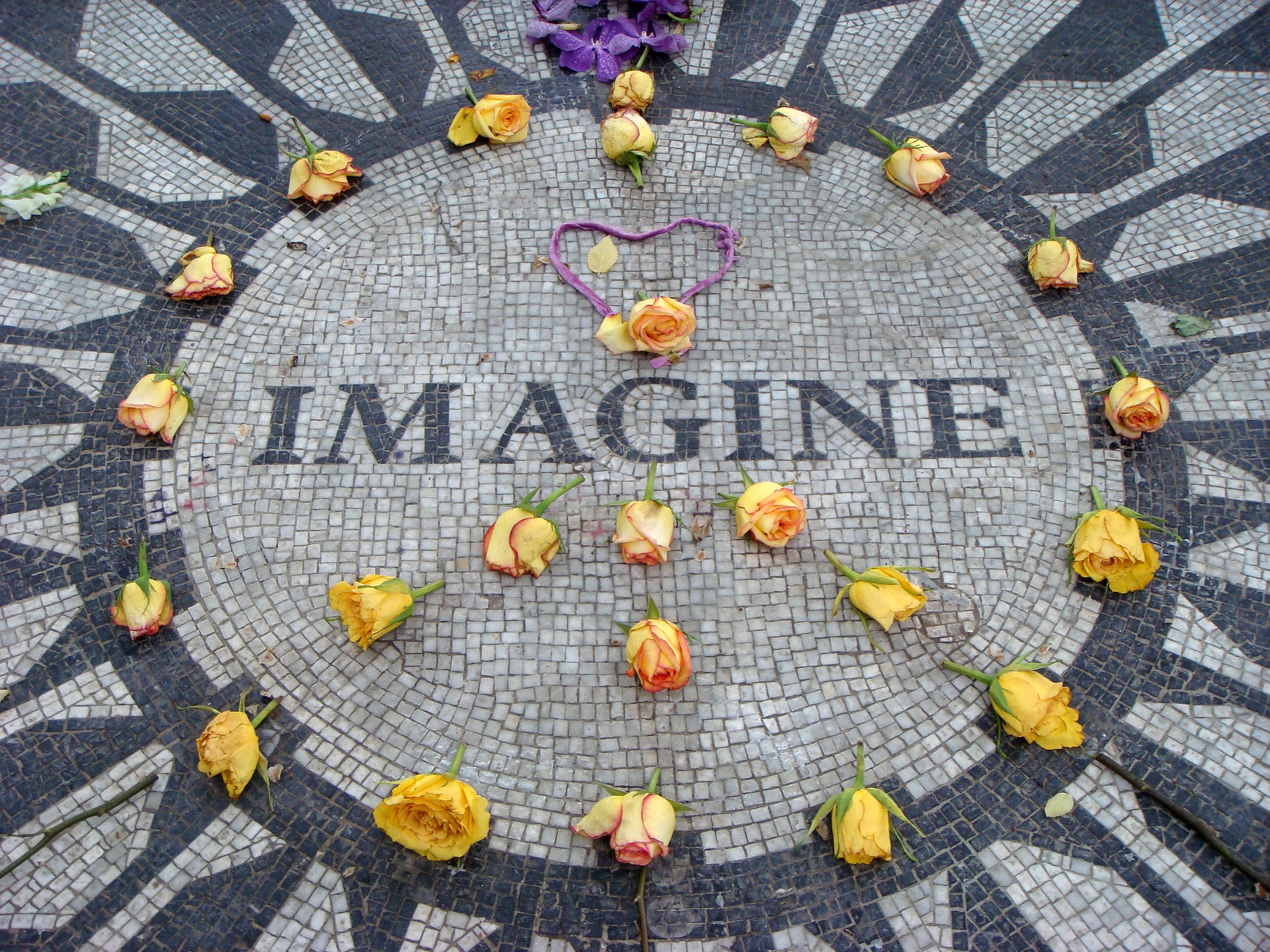
They used three pianos in the final chord of A Day in the Life.
Near the end of A Day in the Life, a loud and impactful piano chord rings out for more than 40 seconds. One of the cool Beatles facts is that John Lennon, Paul McCartney, Ringo Starr, and assistant Mal Evans shared three pianos to play the final E major chord.
Along with the four men, George Martin also played the harmonium. The idea was to let the chord ring out for more than 40 seconds by increasing the recording sound level as the sounds started to fade. Towards the end, you can hear all sorts of studio sounds such as moving chairs and rustling paper.
At 1 minute and 56 seconds, From Me To You was The Beatles’ shortest single to top the UK Singles Chart.
From Me To You was the band’s first song to top what became the official UK Singles Chart, and their second song to top most of the other UK singles charts next to Please Please Me. Running for only a minute and 56 seconds, it’s one of the shorter songs in the Beatles discography.
Despite its apparent popularity in the UK, it didn’t do too well in the US. The tune only first entered the US pop charts when Del Shannon covered it in 1963.
Mae West was reluctant to let The Beatles use her image on the cover of Sgt. Pepper’s Lonely Hearts Club Band.
The cover of the album Sgt. Pepper’s Lonely Hearts Club Band features a number of celebrities and historical personalities including Bob Dylan, Mae West, Marilyn Monroe, Oscar Wilde, Karl Marx, Albert Einstein, Sigmund Freud, and Shirley Temple, among others.
Initially, Mae West refused to have her photo on the album cover, but she changed her mind after the members of the band sent her a personal letter. In another related scenario, Shirley Temple insisted on hearing the album before giving them the go signal to use her image.
The Minor Planet Center named minor planets after the band and its four principal members.
Not only were they rock stars, but the Fab Four now are minor planets as well. In 1990, the Minor Planet Center published the naming citation that lists the names of five minor planets in honor of the iconic band and its members. These minor planets were 4147 Lennon, 4149 Harrison, 4148 McCartney, 4150 Starr, and 8749 Beatles. That’s definitely one of the Beatles facts that are quite literally out of this world!
The Beatles did not voice themselves in the 1968 film Yellow Submarine.
Because of the busy schedules of each member of the band, they weren’t able to voice themselves in the 1968 film Yellow Submarine. They all regretted not being able to voice themselves, but they did sing all their songs and recorded live-action scenes for the film.
Flying and Dig It are the only songs that have credits to all four Beatles.
Most Beatles songs pay credit to either Lennon–McCartney, Harrison, or Starkey (Starr), but only two Beatles songs pay credit to all four band members. These songs are Flying, which appeared on the 1967 album Magical Mystery Tour, and Dig It which appeared on the 1970 album Let It Be.
The term “meter maid” inspired the song Lovely Rita.
Lovely Rita’s composition came from an unlikely origin. Paul McCartney took fascination at the term “meter maid,” an American slang for a female traffic warden. Some sources state that he wrote the song after a traffic warden named Meta Davies, whom he called Rita in the song because “she looked like a Rita” to McCartney. However, he told his biographer that he didn’t write the song about that specific incident, instead writing it after hearing the term “meter maid”.
Around 73 million people watched their performance on The Ed Sullivan Show in 1964.
The Beatlemania phenomenon was certainly big in the United States. In 1964, the band had appeared on American television for three consecutive Sundays following the success of I Want to Hold Your Hand. In their first appearance on The Ed Sullivan Show on February 9th, 1964, around 73 million viewers watched their performance, which set a record for US television that went uncontested for three years.
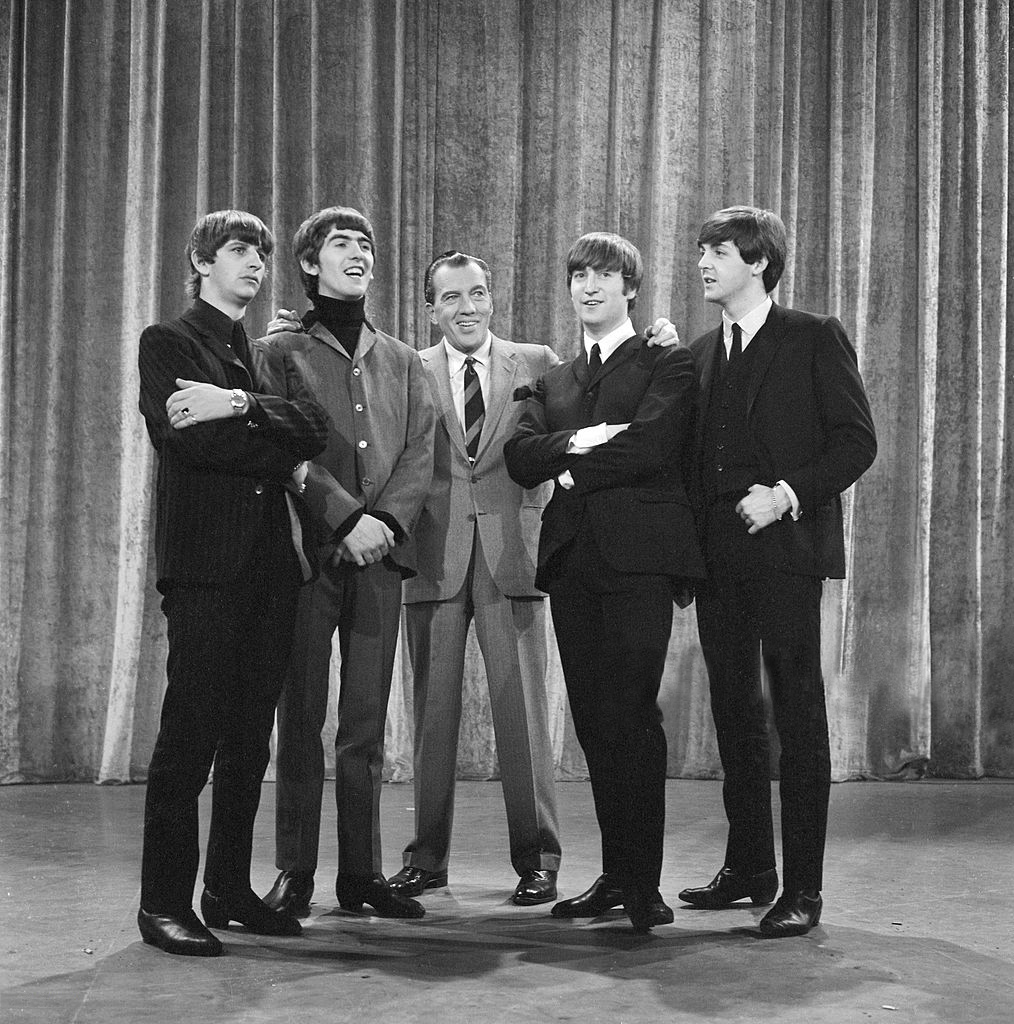
Paul McCartney wrote When I'm Sixty-Four when he was just 16.
Although the band released the song When I’m SIxty-Four in their 1967 album Sgt. Pepper Lonely Hearts Club Band, it was one of Paul McCartney’s earliest compositions. Despite the title, McCartney wrote the song when he was only 16 years old.
At McCartney’s request, they released the song at a different key than the recording. He suggested that the record be sped up because he wanted to sound younger in the song.
George Harrison wrote Here Comes the Sun while he was in Eric Clapton’s country house.
Here Comes the Sun is definitely one of George Harrison’s most famous compositions for The Beatles. It first appeared on their 1969 album Abbey Road, writing it earlier that year at Eric Clapton’s country house. At the time he composed it, he was absent from the band’s business meeting with Apple Corps.
He wrote the song about the forthcoming of spring and his moment of relaxation while playing truant from the business meeting. The song then became the band’s most-streamed song on Spotify, garnering 350 million plays around the world.
Eric Clapton played some lead guitar parts in While My Guitar Gently Weeps.
George Harrison wrote While My Guitar Gently Weeps as a commentary on the band’s increasing disharmony, especially after they took a trip to India to study Transcendental Meditation in early 1968.
The band paid little attention to the composition, so Harrison got a little help from his friend Eric Clapton during the recording. Clapton played some of the lead guitar parts of the song, although his collaboration did not receive any official credit.
After the band’s breakup, three of the members played at Eric Clapton’s wedding in 1979.
The closest thing that the Fab Four ever got to a reunion after splitting up was at Eric Clapton’s wedding in 1979. At the wedding, Paul, George, and Ringo played Sgt. Pepper’s Lonely Hearts Club Band. Interestingly enough, that was Eric Clapton’s wedding with Pattie Boyd — who was George Harrison’s ex-wife.
All four members of the band received their MBE medals in 1965.
In 1965, Queen Elizabeth awarded each of the band members with Member of the Most Excellent Order of the British Empire (MBE) medals at Buckingham Palace in London.
The awarding garnered mixed reactions from the public because of the negative reputation of rock and roll music. In 1997 and 2018, Paul McCartney and Ringo Starr have respectively been knighted for their services to music.
If I Needed Someone is the only George Harrison song that The Beatles performed live.
The Beatles’ lead guitarist George Harrison wrote a number of songs for the band, including While My Guitar Gently Weeps, Something, Here Comes the Sun, and I Me Mine, among others.
However, the only George Harrison song the group played live was If I Needed Someone. Harrison wrote the song for English model Pattie Boyd, whom he married in 1966.
They had eight albums that hit number one on the Billboard 200 Chart.
The Beatles hold the record for most No. 1s on the Billboard 200 Chart. They also topped the Billboard 200 charts with eight consecutive albums, a feat which they share with American rapper Eminem.
Sgt. Pepper’s... is the first British rock album to feature song lyrics printed on the album.
The iconic cover of Sgt. Pepper’s Lonely Hearts Club Band had the lyrics of each song printed on the back, which was the first British rock album to have this feature. The record also featured a number of bonus gifts inside, including cardboard cutouts, a portrait of Sgt. Pepper, a fake mustache, and lapel badges to help the fans imagine themselves as part of the band.
The Beatles wanted to film their own version of The Lord of the Rings.
After the success of their films in the mid-1960s, the group wanted to star in an adaptation of The Lord of the Rings. They wanted their feature to have a psychedelic feel with some of their original songs. When they approached J. R. R. Tolkien for the rights to the trilogy, however, Tolkien refused without leaving any room for negotiation. Tolkien apparently was quite a traditionalist and didn’t like the musical trend that the band had inspired.
George Harrison wrote the music from the film Wonderwall.
In 1968, George Harrison released the first solo album from any member of the band, which was Wonderwall Music. He composed the album as the soundtrack to the 1968 film Wonderwall and featured Indian instruments and Harrison’s Indian-style music. The album eventually inspired the final title of the 1995 hit song by Oasis, Wonderwall.
The album Abbey Road was supposed to be called Everest.
Abbey Road, the band’s eleventh studio album, originally had the working title of Everest, after a brand of cigarettes. However, the name implied a cover photo that would require the band to fly all the way to the Himalayas, which would’ve taken a lot of time and resources. In the end, the band just used the much-closer Abbey Road, which was a road just outside of their recording studio.

Klaus Voormann made the artwork for Revolver.
German-born bassist and artist Klaus Voormann created the cover for the 1966 album Revolver. The artwork features a black-and-white line drawing and collage of the members of The Beatles, in contrast to their usual vibrant album covers. One interesting fact about the cover is that Voormann drew the members from memory. This legendary artwork also won the Grammy Award for Best Album Cover in 1967.
Ringo Starr temporarily left The Beatles in 1968.
During the sessions for their White Album in 1968, Ringo Starr temporarily left the band because he felt left out and overshadowed by the other members of the group. During his time away from the band, Paul McCartney filled in as a drummer for some songs such as Back in the U.S.S.R. and Dear Prudence. The band, however, realized that they needed Starr back and sent him a telegram awaiting his return. In the telegram, the members said he was the best drummer in the world and that they loved him.
Starr returned to the band on September 4 of that year, and upon his arrival at the studio at Abbey Road the following day, he received a lovely surprise. His drum kit was adorned with flower decorations and the words “Welcome back, Ringo.”
A corn flakes cereal commercial inspired the song Good Morning Good Morning.
During the writing of Good Morning Good Morning, John Lennon took a lot of inspiration from the television. The song came to fruition because of a commercial for a corn flakes cereal, and the lyrics feature a reference to a BBC sitcom.
Their former drummer Pete Best released an album entitled Best of the Beatles.
After the band dismissed him as their drummer, Pete Best moved to the United States and continued his music career. He performed with the Pete Best Combo, a five-member band who performed some original songs along with 1950s songs.
The band didn’t reach significant success, but one of their albums gained significant notoriety. They named the album Best of the Beatles, after Pete Best’s name and the fact that he once was in the famous band. The record left many fans disappointed after realizing that it was not, in fact, a compilation album from the Fab Four.
Carl Sagan wanted to include Here Comes the Sun on the Voyager’s Golden Record.
In 1977, NASA launched the Voyager spacecraft containing a Golden Record, which had recordings of sounds and images that portrayed the diversity of life on Earth. The idea was to launch it across space as a time capsule, telling the story of Earth to any intelligent extraterrestrial life that may come across the record.
Renowned scientist Carl Sagan wanted The Beatles’ Here Comes the Sun to be part of the record, but EMI Studios declined despite the Fab Four wanting the song to be part of the record as well.
John Lennon performed Julia without the help of the other Beatles members.
Julia was the only song that John Lennon performed alone as part of The Beatles, and no other member sings or plays in this song. Lennon wrote the song about his mother Julia Lennon who died in 1958, and they released the song as part of their 1968 record The Beatles, commonly known as the White Album.
In a topiary sculpture of The Beatles in Liverpool, vandals cut off Ringo Starr’s topiary head.
The Italian sculptor Franco Covill cultivated a topiary sculpture for 18 months and shaped it after the members of the band. It was unveiled at Liverpool South Parkways Transport Exchange in 2008. However, after a few months, vandals beheaded Ringo Starr’s topiary sculpture and left the others untouched.
The Liverpudlian vandals likely did this because of Starr publicly announcing that he missed nothing about his hometown of Liverpool.
Sean Lennon, son of John Lennon, didn’t know about The Beatles when he was younger.
When Sean Lennon was younger, his parents John Lennon and Yoko Ono didn’t play records of The Beatles at home. He remained unaware of the band’s existence until he saw Yellow Submarine at a friend’s house and his dad had to explain why a cartoon version of him was in the movie.
George Harrison funded Monty Python’s Life of Brian.
The 1979 comedy film Monty Python’s Life of Brian wouldn’t have seen the light of day without the aid of George Harrison. Harrison had been a long-time fan of Monty Python and arranged for the financing of the film. He did this by founding the company HandMade Films. Shockingly, Harrison helped fund the film at a cost of £3 million — all because he wanted to see the film. Terry Jones later described this deal as the “world’s most expensive cinema ticket”.
Even the German version of She Loves You reached the Billboard Top 100 chart.
In 1964, the Fab Four released Sie liebt dich, a German language version of their song She Loves You, in an attempt to drive up their sales in Germany. When they released this version in the US, it still reached the Billboard Top 100 chart. Definitely one of the Beatles facts that’ll show you how impactful the Beatlemania trend was.
In 1999, an intruder stabbed George Harrison multiple times and punctured his lung.
On December 30, 1999, a 34-year-old man broke into George Harrison’s home at Friar Park in England. The man was suffering from paranoid schizophrenia and stabbed Harrison multiple times with a kitchen knife. He managed to puncture Harrison’s lung and cause multiple injuries until Harrison’s wife, Olivia, incapacitated the intruder. Fortunately, both Harrisons survived the incident.
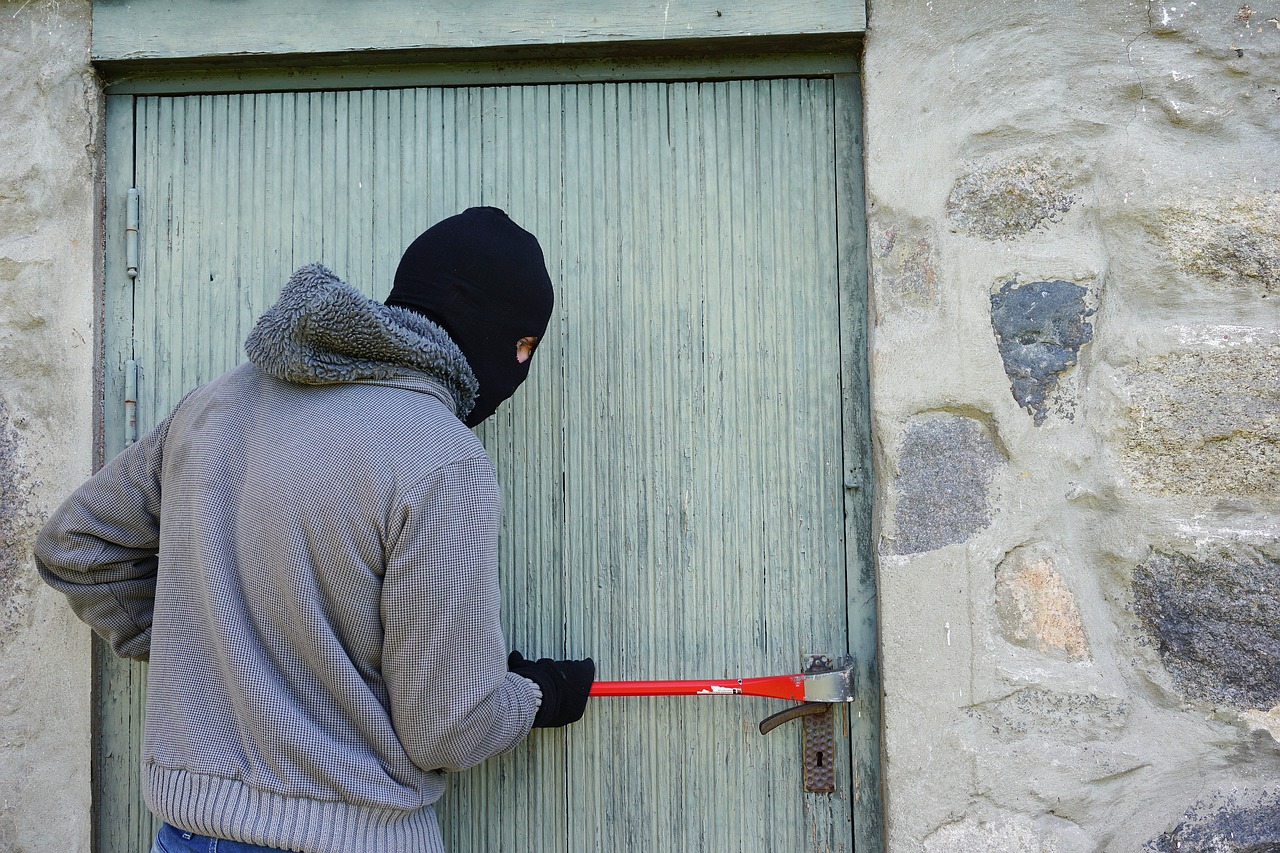
Thieves repeatedly stole the license plate of the car in Abbey Road’s cover photo.
The cover of Abbey Road is perhaps the most famous and widely-imitated album cover of The Beatles. It features the four members of the band walking on a zebra crossing. On the left portion of the photograph, there’s a Volkswagen Beetle car with the license plate LMW 281F. After the album’s release, thieves repeatedly stole the license plate of the car. The car eventually was sold at an auction in 1986.
Frank Sinatra frequently performed The Beatles’ song Something.
One of the best-selling artists of all time, Frank Sinatra, also took a liking to The Beatles. Particularly, he loved George Harrison’s love song Something, which Sinatra deemed “the greatest love song of the past 50 years.” Sinatra frequently performed the song in concert and even recorded it twice.
The Beatles recorded a 27-minute version of Helter Skelter.
During the sessions of the White Album, the band recorded Helter Skelter several times. On July 18, 1968, they even recorded a version of the song that lasted for a grueling 27 minutes and 11 seconds. This version of the song was slower and vastly differed from the original album version.
A monument in Mongolia pays homage to The Beatles.
In Ulaanbaatar, the capital of Mongolia, there’s a monument that stands to commemorate The Beatles and a certain period of time in Mongolian history. The monument stands near the State Department store where the Mongolian youth would gather, listen to Western music, and discuss ideas about democracy.
With all these activities forbidden during the Communist rule, The Beatles reportedly inspired the citizens to fight for their liberty. As a result, the monument still stands strong as a symbol of freedom and democracy.
Was this page helpful?
Our commitment to delivering trustworthy and engaging content is at the heart of what we do. Each fact on our site is contributed by real users like you, bringing a wealth of diverse insights and information. To ensure the highest standards of accuracy and reliability, our dedicated editors meticulously review each submission. This process guarantees that the facts we share are not only fascinating but also credible. Trust in our commitment to quality and authenticity as you explore and learn with us.
